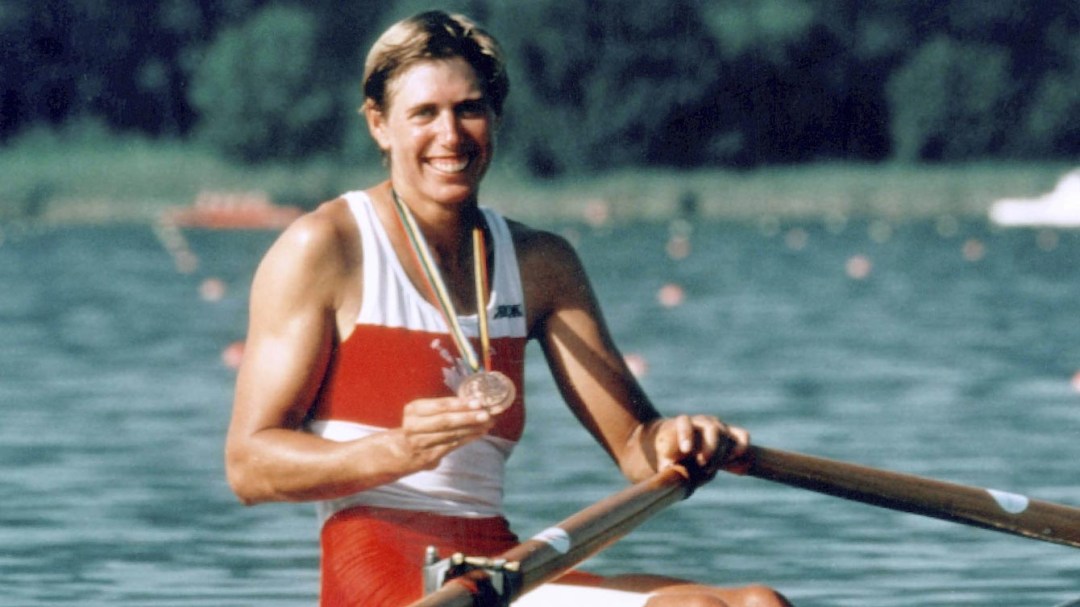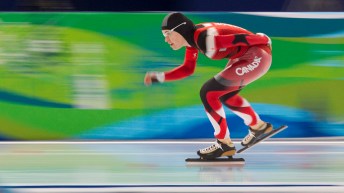Silken Laumann
Team Canada Medal Count
Biography
Four-time Olympian Canada’s Silken Laumann made her first Olympic appearance rowing in double sculls with her sister Danielle at Los Angeles 1984, capturing the bronze medal. After her sister retired, Laumann rowed in double sculls with Kay Worthington at Seoul 1988, but after finishing a disappointing seventh, Laumann focused almost exclusively on the single sculls.
Laumann dominated women’s sculling in 1991, becoming the world champion, and with Barcelona 1992 on the horizon, she was the overwhelming gold medal favourite. Seventy-three days prior to the Games, Laumann’s right leg was shattered in a warm-up area in Essen, Germany when a Germany men’s crew rammed into her shell. Told she would never row again, after five operations and a desire to prove her doctors wrong, Laumann arrived at Barcelona 1992 walking with a cane to her boat. She finished second in her qualifying heat, won her semifinal and gutted it out for bronze in the final, bringing tears to the eyes of her Canadian fans who had risen in the middle of the night to witness a miracle live on Canadian television. Laumann had rowed a race that transcended medals. Her courageous comeback and determination spoke to people’s imaginations and she was admired from coast to coast with legendary status.
Driven by the competition, Laumann was the gold medal favourite at Atlanta 1996. Despite a mid-race challenge in the final race of her career, Laumann finished second in the single sculls, ending her Olympic career with a silver medal, for an all-time total of one silver and two bronze.
In 1985, Laumann finished fourth at the World Rowing Championships in single sculls, then won silver at the 1987 Pan American Games. After she finished seventh at the 1989 World Championships, Laumann made the move from Ontario to British Columbia in 1990 to train year-round with coach Mike Spracklen in Victoria. The next year Laumann won single sculls silver at the 1990 World Championships before capturing the 1991 World title, which she embraces as an incredible moment in her life. Laumann took a year off after Barcelona 1992, returning to compete at the 1994 World Championships, where she was disqualified for two false starts, but rebounded to capture a silver at the 1995 World Championships.
In 1995, Laumann was once again in the limelight when a miscommunication lead to a positive drug test at the 1995 Pan American Games. She’d taken the banned substance pseudoephedrine found in an over-the-counter decongestant. The mix-up was caused when team doctors failed to differentiate between the “Benadryls”. It cost Laumann and her teammates a gold medal in the quadruple skulls, and momentarily their reputations, but she was not suspended by rowing’s international governing body.
Laumann’s mother walked across railroad tracks from East Berlin to West Berlin in 1959, immigrated to Canada after marrying her husband in 1960 and started her family, where Laumann was the second of three children. Laumann followed her sister into rowing at 17 when her early days as middle-distance runner saw her plagued with stress fractures as her legs sprouted. Inspired by Romanian gymnast Nadia Comaneci at Montréal 1976, her sister, and her teachers, Laumann was competing at world championships within a year, and within two years, she was rowing at Los Angeles 1984 with her sister.
A graduate of the University of Western Ontario, Laumann settled in Victoria and had two children who both became rowers. Her post-Olympic career included motivational speaking, personal appearances, and authoring her memoir Unsinkable in 2014. Motivated by her own personal struggles, Laumann became a passionate advocate for personal health and well-being, starting a not-for-profit project called “Unsinkable” to connect and empower Canadians to achieve better mental physical and spiritual health.
Laumann was twice named Canada’s female athlete of the year (1991, 1992) and won the Lou Marsh Award in 1991 as Canada’s outstanding athlete. Three times she was awarded Mississauga Athlete of the Year (1984, 1988, 1992), four times Ontario Athlete of the Year (1984, 1990, 1991, 1992), as well as the 1992 Harry Jerome Comeback Award. The Silken Laumann Rose (a red miniature) was created in Victoria for the 1994 Commonwealth Games and in 1995 a street in her hometown of Mississauga was named Silken Laumann Way. In 1997, Laumann became the first non-American to ever win the Wilma Rudolph Courage Award. She has received Honourary Doctor of Laws from the University of Victoria (1994), McMaster University (1994), the University of Windsor (1997), Laurentian University (1998) and Western University (2013).
In 1999 Laumann won the Thomas Keller Medal for an Outstanding Career in Rowing and was inducted into the Mississauga Hall of Fame. She was inducted into the Canadian Olympic Hall of Fame in 1992, Canada’s Sports Hall of Fame in 1989, British Columbia and Ontario Sports Hall of Fame in 2004. Laumann was named B.C.’s Top 100 Women of Influence in 2010 and in 2015 was inducted to Canada’s Walk of Fame.
Olympic Highlights
| Games | Sport | Event | Finish |
|---|---|---|---|
| 1984 Los Angeles | Rowing | Double Sculls - Women | Bronze |
| 1988 Seoul | Rowing | Double Sculls - Women | 7 |
| 1992 Barcelona | Rowing | Single Sculls - Women | Bronze |
| 1996 Atlanta | Rowing | Single Sculls - Women | Silver |






